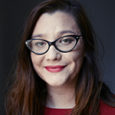Every day, pupils at the “Meto Bajraktari” primary school in Prishtina pass by painted quotes on the importance of knowledge and education as they climb the stairs at the school’s front entrance on their way to class.
Words such as “Reading feeds the mind” and “The mind seeks knowledge” are intended as a reminder that with every step they take, they are laying the foundations for their future life successes and achievements.
In the nearby “champion” school, “Pjetër Bogdani*”, children sit at their desks with their books open, facing the blackboard. On the white wall, painted punctuation marks convey reminder messages of what each stands for; a comma, catching its breath, says “I think you should all rest for a few seconds,” while a grumpy full stop says “You should all stop.” Basic arithmetic calculations are also explained with colorful numbers being subtracted by a green fish.
The classrooms are bright and well-lit, with sunlight beaming in at the big open windows while, with just 20-25 children per class, there is plenty of space for each.
With just a surface level glance at the bright colors, “inspiring” messages and positive facade of some of the capital’s schools, it may be hard to believe that the education system in Kosovo is in fact failing. And yet the rosy exterior of some of Prishtina’s schools belie a much more troublesome picture of the country’s primary education in general, particularly in other cities and rural areas.
How do Kosovo’s schools work?
Kosovo’s education system has a number of levels, starting with pre-school.
The first compulsory education level is primary education, which generally takes place between the ages of 6 and 11 (grades 1 to 5) and during which a single class teacher provides a general education.
The next level is four years of lower-secondary education (grades 6-9), where teachers are specialized by subject. Primary and lower-secondary education usually takes place within the same school building and is often collectively referred to as “primary school.”
At the age of 15, pupils choose an educational track such as social and natural sciences, arts or vocational options. This choice determines the specialist “gymnasium” or vocational high school where they complete three further years (grades 10-12) of upper-secondary education.
In many of Kosovo’s primary schools, class sizes are almost double, with around 40 pupils per class, basic resources such as updated and qualitative textbooks and computers are often missing, while professional services are widely dysfunctional or lacking. And as a whole, it is by now a well-versed fact that pupils in Kosovo go on to do worse in standardized tests not only than their counterparts in the region, but also when compared to children throughout the world.
In many ways, the current condition of Kosovo’s education system cannot be understood without seeing it through the prism of the destruction — both physical and structural — wrought on it by Slobodan Milošević’s repressive regime during the 1990s.
For much of that decade, the education system for Kosovar Albanians relied on home-schooling and on the parallel education system after Albanian students and teachers were forced out of schools and universities. Between spring 1992 until the end of the peaceful resistance toward the end of the decade, improvised schools, built from around 3,200 houses, garages and basements, were attended by more than 100,000 students.
The oppression caused significant damage to the fabric of the education system. By 1995-96, the numbers of those attending education establishments at all levels were significantly down on those recorded in 1989-90; the number of children attending primary school had dropped by 12%, while high school pupil numbers were down 21% and the number of university students had halved.
Much of today’s workforce is therefore one that had its own schooling badly interrupted at a crucial time in their education.
But subsequent developments have also helped to shape the current state of education in today’s Kosovo.
During the UN Mission in Kosovo (UNMIK) administration in Kosovo between 1999 and 2008, the education system was centralized, moving administrative authority from the local level to central institutions. During this time, permanent pedagogical staff and local pedagogical entities that had supported teaching staff in schools were replaced with service-contracted international organizations, who ran trainings, workshops and seminars.
Education plans, strategies and curricula also began to be written and rewritten in those early post-war years on the quality, inclusivity and diversity of Kosovo’s schools — all approved by the Ministry of Education, Science and Technology (MEST) and intended to be in line with international standards.
In recent years, there has been a Pre-University Education Strategy, Education Strategic Plans, a Quality Assurance Strategy for Pre-University Education and various other administrative instruments aimed at raising educational standards.
But despite all the frameworks and good intentions, the quality of primary education in Kosovo has remained — on the whole — desperately low.
The new curricula
One of the major reforms in the primary education system has been the updated Curricular Framework for Pre-university Education, which includes a detailed curriculum for each stage of study.
Initially approved in 2011, the framework is aimed at shifting education goals from being subject-based — increasing knowledge in subjects like math, physics and chemistry — to being competencies and skills-based. The curricula therefore focuses on things such as effective communication and expression, critical thinking, successful learning, productive contribution to life, work and the environment, personal competencies in terms of managing stress and healthy lifestyle, and civic competencies such as responsible citizenship.
Each element has prescribed outputs, defining what pupils are expected to have achieved by the end of primary and high school education, with teachers expected to regularly report on every pupil’s progress.
Implementation of the new curriculum throughout all schools in Kosovo did not actually start until two years ago, six years after the framework was first approved.
However, despite the aims, implementation of the curricula has had many shortcomings and faces criticism from teachers and educational experts.
One of the criticisms of the process is that implementation of the new curricula throughout all schools in Kosovo did not actually start until two years ago, six years after the framework was first approved by MEST.
In the meantime, two piloting phases took place, the first with 10 schools in 2012-13 and the second with 95 schools in 2015-16, which replaced an even bigger planned pilot phase that had been due to take place in the 2014-15 academic year. Even after the wide scale piloting program, it took another year to re-draft and approve the curricula before they came into effect in schools throughout Kosovo in 2017.
Even with the time taken to test and implement the curricula, other problems have arisen.
One is that new textbooks, as required for the new curricula, were not published and provided to teachers and students until this September, four school years after the initial pilot phase. Even then, there were reports at the start of this school year that new textbooks for some grades were still not available and that there may be a further delay of another year before they can be used.
Fjolla Jashari, a young teacher at “Pjetër Bogdani” primary school teaching 6- to 11-year-olds, says that the school books that pupils have been using — including the new ones — leave them unprepared for what they are asked in standardized tests. She states that the books used do not enhance problem solving and critical thinking skills, particularly in technical subjects such as math and that this element is therefore left down to individual teachers’ discretion, allowing some of them not to teach these skills.
Some monitoring of textbooks has taken place, but rather than a comprehensive assessment of the quality and suitability of the resources, it tends to have been limited to topic-based analyses only.
One such assessment, a gender analysis of textbooks carried out by the Kosovo Education Center (KEC), found that school books in general don’t promote gender equality as they should. According to Dukagjin Pupovci, KEC’s executive director, the education system perpetuates and reinforces gender roles among students.
“We did an analysis a couple of years ago with a sample of around 1,700 students, on the perceptions that students have on their rights, where gender perceptions were also included,” he says. “It was interesting to discover that more than 50% of girls in the 7th and 8th grades considered they should not be equal to boys.”
There is also frustration amongst teachers at a lack of other support from MEST when it comes to implementing the curricula, including unfulfilled promises to improve inadequate infrastructure.
Trendafile Zabërgja, a lower-secondary education music teacher at “Meto Bajraktari,” says she doesn’t have adequate resources to meet set goals. She doesn’t have a music classroom so instead uses a regular classroom — one that is also used for meetings and other purposes — to store a piano, a triangle and a single guitar.
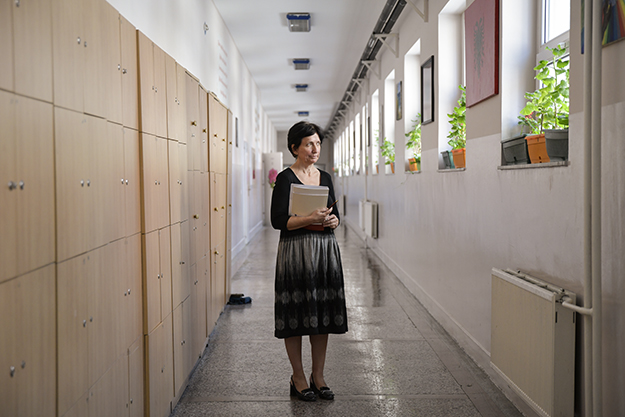
Trendafile Zabërgja says that teachers have not always received enough support from MEST when introducing the new curricula. Photo: Atdhe Mulla / K2.0.
Zabërgja further points to increased administrative work having been added to teachers’ obligations with the introduction of the new curricula, and says that the combination of this and the lack of resources makes it a struggle to meet the required results in the classroom.
“I think these requirements should be simplified,” she says. “The teacher should be able to practice the subject and transmit it to the pupils and not have to deal with the administrative workload back at home.”
It’s a point echoed by Jashari. “It requires a lot of administrative work, and as a teacher you are burned out when it comes to daily work in the classroom,” she says.

Fjolla Jashari is concerned at the level of additional administrative work distracting from teachers’ daily classroom teaching. Photo: Atdhe Mulla / K2.0.
Teachers have also expressed their concerns at the training they have attended on delivering the new curricula, particularly when it was first introduced.
“The training, organized by the Ministry of Education, is a six-day training and this is not enough for teachers to get the right information, or at least the trainers who provide information on the curricula should be a little more accurate,” Jashari says. “I just didn’t get enough from those six days of training and I had to study the curriculum on my own and learn how to implement it in the classroom, how to make an annual, two-year, two-month, daily plan, and so on.”
Zabërgja says that the training she attended was particularly hard to follow because they initially didn’t receive any materials or resources. “It was very difficult and quite stressful, because it was something that was being required of us, and we weren’t able to get as much information [as we needed].”
However, she says that recent trainings have begun to show improvements and states that teachers have subsequently received manuals to help make their obligations clearer.
“Trainings for the new curricula were reduced to the minimum in terms of days that were offered.”
Rrezearta Zhinipotoku-Behluli, GIZ
One of the organizations that has worked in partnership with MEST over the years on many aspects of educational development, including the professional development of teachers, has been the German development agency GIZ.
Rrezearta Zhinipotoku-Behluli, an education expert at GIZ, says that the agency has helped to train 4,300 teachers in 140 schools since 2008, including on some subject-specific elements of the new curricula in recent years. She believes that teacher trainings have been made shorter than would be ideal and that they have been spread across a relatively low number of schools.
“In recent years, trainings have been very basic,” she says. “Trainings for the new curricula were reduced to the minimum in terms of days that were offered.”
Pupovci, whose organization has also been involved in teacher training over the years, asserts that trainings that have proved to be most effective are those spread over a longer period of time. “From our 20-year experience to date, the best results are achieved by our long term and school-based trainings,” he says.
He adds that some teachers have complained at how short and general the trainings on the new curricula have been and that many are concerned about their ability to implement the requirements, particularly when it comes to new evaluation requirements for pupils.
K2.0 contacted various officials within MEST for interview, but neither its Communication Office, nor Fatmir Elezi from the Division for Standards, Monitoring and Evaluation replied. Feime Llapashtica, the head of the Division for Curricula and School Textbooks, said she would reply to questions in writing, but failed to do so.
Politicized education system
On the macro level, Pupovci says that one of the contributing reasons to the generally poor quality of primary education in Kosovo is the politicization of the education system, which has been filled with militants from governing parties.
He states that due to the decentralization of the education system under UNMIK, the Ministry of Education appointed school directors and management staff based on political preferences and not necessarily their qualifications.
This has created an environment where the priority of the government is not the improvement of the quality of education, he says, but using the education system as a tool for electoral gains.
“This in a way damages what is called responsibility and accountability in schools, because when you appoint a principal who is there because of political affiliations, accountability isn’t required from that principal in relation to results in their school, but this person is required to channel some political processes in the community, i.e. during elections,” Pupovci says. “The principal is guilty if you lose votes in that community, but they are not guilty if there is no quality in the school’s processes.”
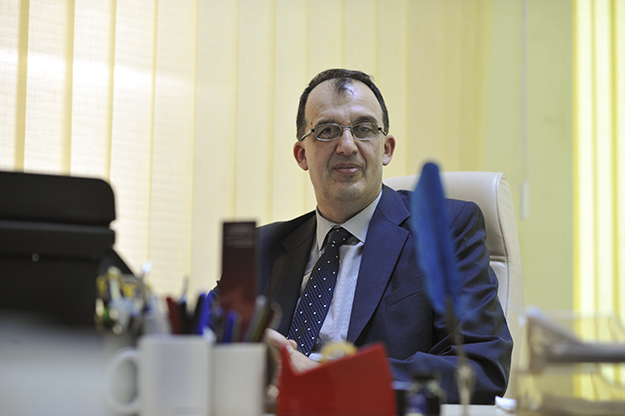
Dukagjin Pupovci, director of the Kosovo Education Center, says that the politicization of schools has severely damaged accountability in the education sector. Photo: Atdhe Mulla / K2.0.
Pupovci points out that politicization isn’t only a problem that affects lower educational levels but the education system as a whole, highlighting the rapid establishment of six new regional universities in recent years as an example. In the build up to the general elections in 2010, then prime minister and head of the Democratic Party of Kosovo (PDK) Hashim Thaçi promised students in the country’s biggest cities that he would transform their local faculties into universities in their own right.
But the accreditation of the new universities in Prizren, Peja and Mitrovica was suspended for a year in July for failing to meet minimum standards, while the Kosovo Accreditation Agency was recently expelled from the European Association for Quality Assurance in Higher Education, due to political interference and unprofessional conduct.
“A minister comes in saying, ‘Let’s do this now in this way’ — they do not work based on evidence.”
Dukagjin Pupovci, Kosovo Education Center
Pupovci maintains that the politicized nature of the education system results in education reforms and policies being introduced with little forethought or planning.
“There is no coherence in policy-making… this is the way that policy-making works in Kosovo, not just in the education system,” he says. “A minister comes in saying, ‘Let’s do this now in this way’ — they do not work based on evidence.”
He adds that with each new government trying to come up with fresh reforms and strategies, little thought is given to the problems that could arise during implementation, and teachers and schools are rarely consulted despite being the experts on the ground.
“In other countries, schools draft the content, the content doesn’t come from the ministry — the ministry provides the intended results and the schools decide the ways [in which to contextualize it],” he says.
The introduction of the new curricula was foreseen with this approach in mind, but Pupovci says the reality was different due to “a totally unprepared pilot phase” and that the ministry continued to develop the content without asking for feedback from teachers or taking account of their concerns in the re-drafting process.
He also points to the huge scale of the second pilot phase — with almost a hundred schools involved — as an indication of poor planning on the ministry’s part, since there were not enough inspectors to check that the pilot was being implemented as intended.
GIZ’s Zhinipotoku-Behluli also highlights the government’s ad hoc approach to policy making as a concern.
“Some of the laws that are not harmonized, should be harmonized,” she says, referring to a GIZ analysis of the coherence of pre-university education legislation. “We have our reservations with all the policies, all the reforms based on those policies, whether they are in harmony with each other.”
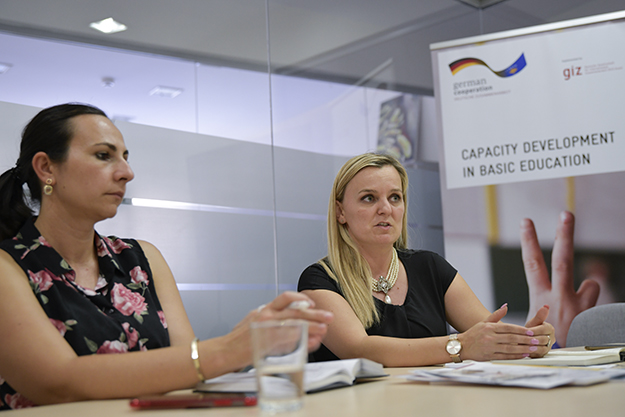
Rrezearta Zhinipotoku-Behluli, an education expert at GIZ, says that reforms in the education sector have not been joined up and that there is a tendency toward perpetual experimentation. Photo: Atdhe Mulla / K2.0.
Zhinipotoku-Behluli says that it would be better for the ministry to continue funding practices that have proven efficient and successful in their pilot phases, rather than what she identifies as the current tendency to fund and pursue innovative and experimental approaches indefinitely. She says that there are good approaches and practices that have proven to be effective, from which the education system may benefit, if only the ministry would support their implementation beyond the pilot phase.
Some of the results of successive governments’ politicized approaches to the education system and their ineffective planning can be seen in the distribution of schools throughout the country; some areas have new “ghost schools” that have never been used, while schools in some cities operate on a three-shift system to try and accommodate all of the pupils.
According to official data from the Kosovo Agency of Statistics, there are also more than 500 more staff employed in the country’s schools compared to when Kosovo declared independence in 2008 despite the number of pupils having dropped by almost 20% in the same period.
When it comes to tackling Kosovo’s education deficiencies, the task ahead for the incoming government therefore appears to be a monumental one, after years of half-hearted and disjointed reforms, politicization and a lack of accountability have left teachers frustrated and a system that still sees children learning mechanically, not critically.
“For us, that is the problem,” Pupovci says. “Our education system does not teach you how to learn, which is one of the goals of education: Learning to learn. It does not cultivate that lifelong learning habit.” K
Feature image: Atdhe Mulla / K2.0.
* Correction: The name of “Pjetër Bodgani” school was originally published as “Pjetër Budi” school.
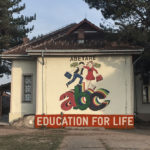
Back to Monograph






